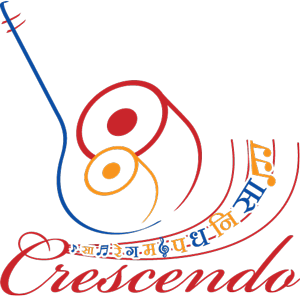| Tanpura or Tambora | |
|---|---|
| Picture | Please login to view this information |
| Instrument Type | String |
| Description | The Tanpura is the fundamental and most important accompanying instrument for Indian Art music. It is an elusively simple instrument. That is, its structure is quite simple and the playing technique can be mastered very easily. But the richness and wholesomeness of the sound it produces is mindboggling. It is a drone instrument strummed continuously during music making and is capable of producing numerous overtones which merge with each other beautifully to give a harmonious canvas for the vocalist to create his music. The origins of the Tanpura can be traced to the folk instrument Tamboori. It is a long wooden stem fitted at one end with a spherical wooden resonator. The Tanpura however is a very evolved and sophisticated instrument. It has not undergone much change in the construction principles. The changes are possibly in the sizes and number of strings used. Construction: The resonator or gourd (Tumba) 70 to 90cms in diameter is a variety of pumpkin produced mainly in the state of Maharashtra. This fruit is dried and seasoned by hanging it well above a smoky fire. When it is ready, it is hollowed from inside. It is vertically cut and that portion is covered by a slightly bulging wooden disc. A small wooden neck (Gullu) is attached to it. Then a hollow pinewood stem about 105 to 120 cm is fixed on top. This is called Dandi. At the top of this stem, in the front and on either side, pegs (Khunti) are fixed, around which, the strings are wound. These pegs are tightened or loosened while tuning the Tanpura in order to increase or decrease the string tension. At the base of the Tanpura, a bridge (Ghodi) with small holes is fixed. The main bridge is centrally placed on the wooden disc at an elevation. This helps the sound to resonate. Untill the mid 20th century, the bridges of Tanpura were made of Stag Horn (Sambar Sihing) and ivory, but now they are made of artificial material. The strings (Taar) are passed through the holes of the lowermost bridge in such a way that one end of the string is locked. Then they pass over the main bridge where there are grooves for each string. Tuning beads (Mani) are inserted in each string which rest below the bridge on thin strips of wood. Near the top, there are again 2 very thin bridges through and over which the strings pass before finally being wound around the tuning pegs. Javari; A thin thread is inserted between the string and the bridge so as to create the unique resonance of the Tanpura. The bridge has a convex curvature and is polished and scraped in order to give the desired sound. This is a highly specialized art. It needs not only a lot of technical expertise but also a highly developed sense of sound quality and pitch.
Tuning of Tanpura: Usually Tanpura have 4 strings. The higher the pitch, thinner are the strings and vice versa. The first one is tuned to Mandra Pancham (lower fifth), the next 2 to the tonic Shadja (Jodi or pair) and the last one made of brass or copper is tuned to the tonic an octave lower (Kharaj). According to the notes used in Raga, the first string is sometimes tuned in Mandra Madhyam or Mandra Nishad, instead of Mandhra Pancham. If Tanpura has 5 strings, the tuning scheme is usually 'P-'N-S-S-'S or 'G-'P-S-S-'S Or 'm-'D-S-S-'S. The main tuning is done with the pegs. Then the finer tuning with the beads and the most intricate is done by adjusting the threads or the Javari. |
| Exponents | Please login to view this information |
|
|



